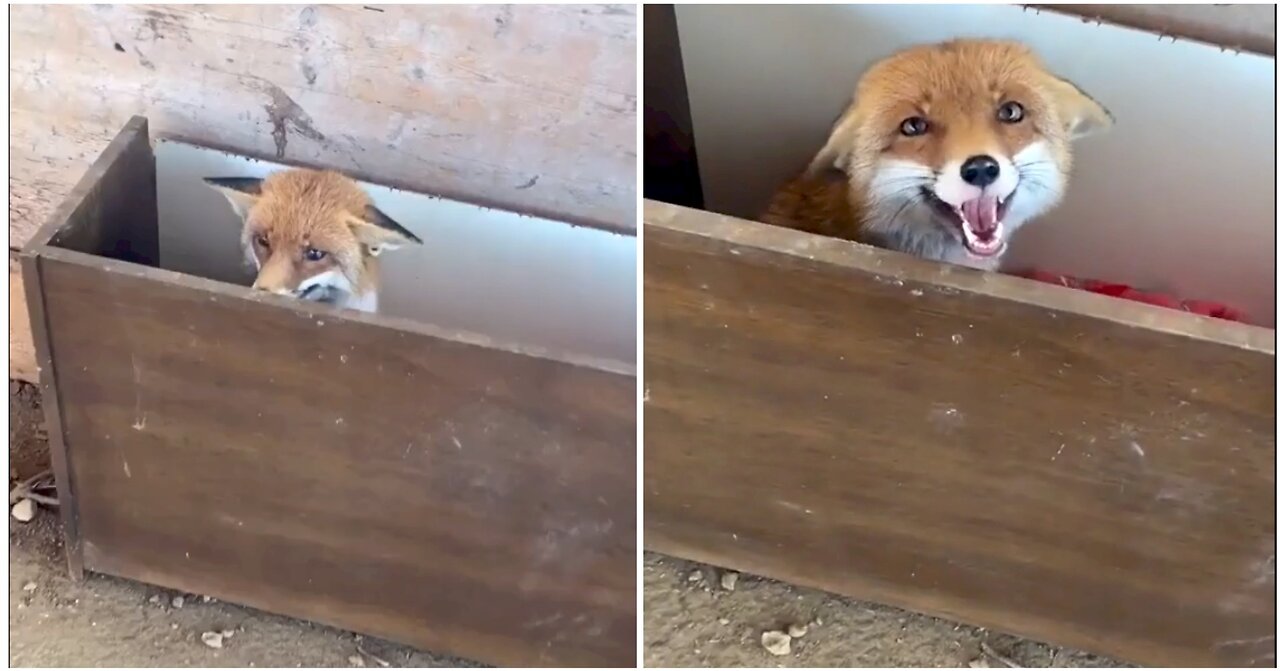Premium Only Content

Baby fox didn't come out she thinks someone will hurt her
Baby fox didn't come out she thinks someone will hurt her
Facts you need to know about foxes:-
Not everyone has four thousand pounds to spend buying a domesticated farm fox and, as such, are restricted to watching wild animals. Getting even a glimpse of a wild rural fox can be frustratingly difficult (and I speak from considerable personal experience there); but, fortunately for those who appreciate being able to see these mammals, foxes have readily taken to our towns and cities and are now frequent visitors to gardens, whether we realise it or not.
Foxes began living in our cities after World War I; a response, many consider, to a change in people’s lifestyles. There has been some suggestion that an outbreak of myxomatosis in Britain during the early 1950s actuated the fox’s colonisation of urban areas, although the current evidence doesn’t support this theory (see urban fox QA). Indeed, it is widely held that the most likely “cause” of urban foxes was the development of once rural land after the First World War; land was built upon and, rather than moving, the foxes adapted to their new surroundings. Whatever the ultimate reason for foxes appearing in our towns, they have thrived in this environment and shortly after World War II they were commonplace in some southern cities. DEFRA, at the time known as MAFF, for example, shot 181 foxes in southeast London during 1947.
My experience, and that of many others, is that foxes readily become used to human activity and learn to ignore it. (It is worth mentioning that tolerance is not the same as “tameness”, which is a mistake many people seem to make – wild foxes are just that, wild, regardless of how relaxed they appear in your company.) In fact, they can become so unfazed by, almost complacent of, human activity that they have been seen in busy high streets during the daytime, they wander around an industrial estate near me in the middle of the day ignoring the cars and workers, and dodge lorries to scavenge on rubbish tips. It should be remembered that foxes have evolved a strategy of judging danger, in centuries past from predators such as wolves and lynx, from a distance, which probably explains why they tend to sit and watch us rather than immediately fleeing.
-
 49:29
49:29
The Rubin Report
2 hours agoDetails About Joy Reid’s Weeping Farewell No One Noticed with Co-Host Megyn Kelly
9.74K16 -
 LIVE
LIVE
Benny Johnson
1 hour ago🚨Epstein Files COVERUP EXPOSED: FBI Sabotaging Trump, DELETING Evidence?! | Tapes 'MISSING'?!
15,507 watching -
 59:29
59:29
Steven Crowder
3 hours agoCrafting Crowder's Comedy Gold | Behind the Scenes
137K83 -
 2:06:44
2:06:44
Tim Pool
2 hours agoTHE END OF THE WEST, Will We Survive Without Christianity? | The Culture War with Tim Pool
56.8K29 -
 LIVE
LIVE
Right Side Broadcasting Network
3 hours agoLIVE: President Trump and Ukrainian President Zelenskyy Meet and Hold a Press Briefing - 2/28/25
5,680 watching -
 LIVE
LIVE
LFA TV
15 hours agoBODYCAM FOOTAGE OF TRAFFIC STOP! | LIVE FROM AMERICA 2.28.25 11AM
4,716 watching -
 LIVE
LIVE
The Big Mig™
4 hours agoGlobal Finance Forum From Bullion To Borders We Cover It All
2,118 watching -
 LIVE
LIVE
Tudor Dixon
2 hours agoThe Last Supper with Chris Tomlin | The Tudor Dixon Podcast
112 watching -
 48:58
48:58
BonginoReport
4 hours agoFake Epstein Files Fallout + Will Cain on the Government’s Internal Civil War (Ep.150) - 02/28/2025
101K239 -
 22:54
22:54
Clownfish TV
12 hours agoJournalists are RAGE QUITTING! Mainstream Media's Free Ride is OVER!
5.28K4